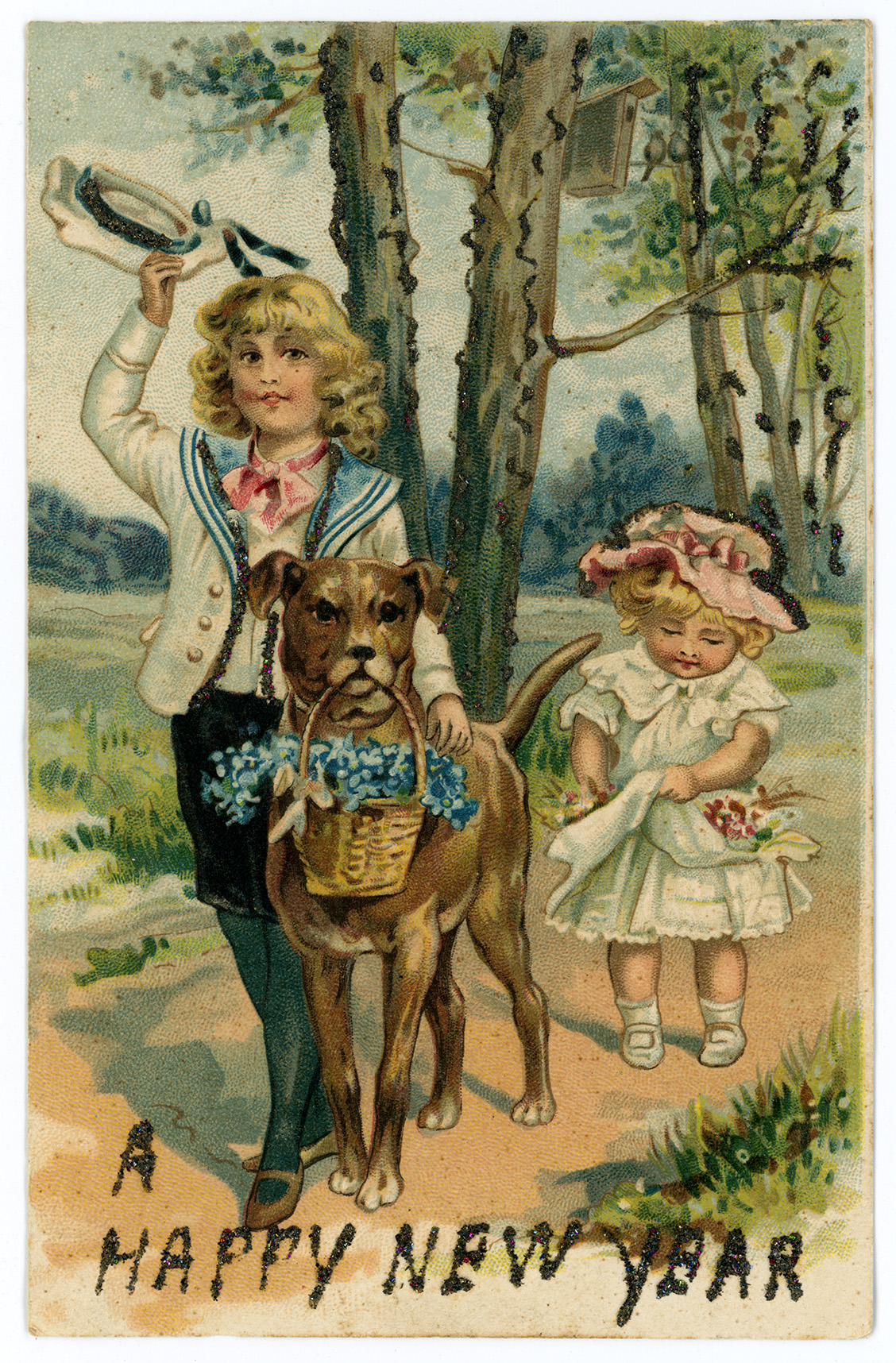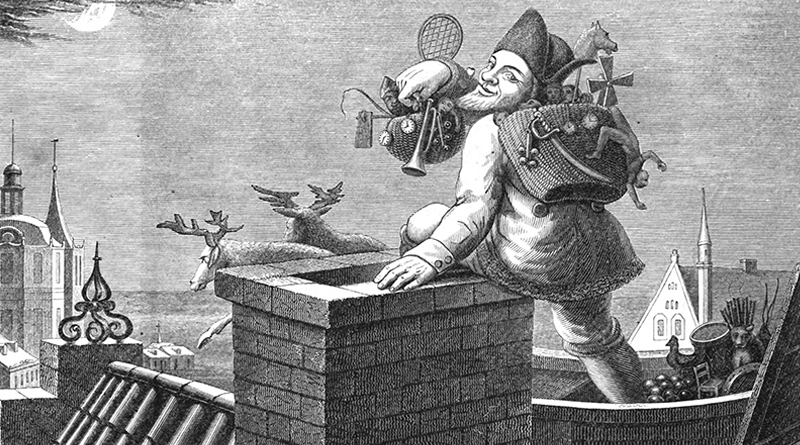How New Year’s Lost Many Traditions to Christmas
SMU Office of News and Communications
Many of the beloved traditions that Americans associate with Christmas began as New Year’s traditions, according to SMU cultural historian Alexis McCrossen.
Even the classic 1823 Clement Moore poem, “Twas the Night Before Christmas,” had a New Year’s version published in multiple newspapers, she said.
Due to the legacy of the Puritans, who once outlawed Christmas celebrations, Americans were suspicious of most holidays until after the American Revolution. Then, as they began to celebrate the “winter holidays,” they developed traditions that today we associate more with Christmas than New Year’s. “Until the 1850s and 1860s, Americans were as likely to hang stockings, give gifts and host parties on New Year’s as they were at Christmas,” McCrossen said. “They baked New Year’s cookies and pies, hosted New Year’s dinners, and of course, raised toasts to the new year with adult beverages.”
Santa Claus – Naughty or nice?
Santa Claus first visited on New Year’s, but not always as the jolly and kind Santa we know today. Instead, some portrayed him as a prankster, carouser and mischief maker. Others promoted the benevolent image of St. Nicholas, particularly in New York, where he was a patron saint. But naughty or nice, Santa visited at Christmas and New Year’s. After the Civil War, Christmas and New Year’s split into two holidays — a family-oriented Christmas and a rowdy New Year’s, McCrossen says, and with the split Santa became nice.
New Year’s gifts
Until the 1850s and 1860s, Americans gave each other New Year’s gifts, from small tokens like pin cushions to expensive gold watches. American presidents usually received New Year’s gifts too, including a one-ton chunk of cheddar cheese, known as the “Mammoth Cheese” presented to Thomas Jefferson in 1801, six baskets of champagne sent to James Buchanan in 1858, and a Navajo blanket that Kit Carson presented to Mary Todd Lincoln in 1862.
Dancin’ around the New Year’s tree
The first mention of an American holiday tree appears in an 1836 short story, Catherine Sedgwick’s 1836 “New Year’s Day,” and the tree was a New Year’s decoration.

Parties, friends, and cards
Holiday gatherings with friends and holiday cards also began at New Year’s, McCrossen says. New Year’s was a day for visiting friends and family. Beginning with George Washington on New Year’s Day in 1790, even the U.S. president hosted members of the public; they lined up to greet him at the White House until Herbert Hoover ended the custom in 1933.
Too many visits, not enough time prompted the creation of New Year’s cards when holiday callers couldn’t visit all their friends and family in one day. The first mass printed New Year’s cards appeared in the 1840s in the United States, twenty years before Christmas cards became popular, McCrossen said.
By the 1870s the transition from New Year’s traditions to Christmas traditions was nearly complete. Merchants, including confectioners, bakers, booksellers, toy makers, and department stores, encouraged Americans to decorate, feast, and give gifts at Christmas. The custom caught on, such that by the 1870s Christmas was nearly synonymous with presents, stockings, and Clement Moore’s classic poem “’Twas the Night Before Christmas.”
In the last decades of the 19th century, the night before New Year’s became known as “New Year’s Eve.” As cities grew and became electrified, it was the “night of nights” where crowds of partygoers and thrill seekers filled the streets. Stockings, gifts, and Santa’s night ride were immortalized in the Christmas version of Clement Moore’s poem. “Merry Christmas to all, and to all a good night.”









